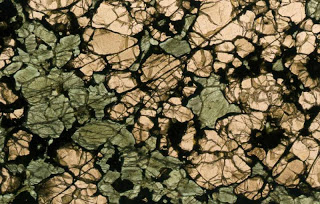
Earth is clingy when it comes to copper. A new Rice University study recently published in the journal Science finds that nature conspires at scales both large and small — from the realms of tectonic plates down to molecular bonds — to keep most of Earth’s copper buried dozens of miles below ground.
“Everything throughout history shows us that Earth does not want to give up its copper to the continental crust,” said Rice geochemist Cin-Ty Lee, the lead author of the study. “Both the building blocks for continents and the continental crust itself, dating back as much as 3 billion years, are highly depleted in copper.”
Finding copper is more than an academic exercise. With global demand for electronics growing rapidly, some studies have estimated the world’s demand for copper could exceed supply in as little as six years. The new study could help, because it suggests where undiscovered caches of copper might lie.
But the copper clues were just a happy accident.
“We didn’t go into this looking for copper,” Lee said. “We were originally interested in how continents form and more specifically in the oxidation state of volcanoes.”
Earth scientists have long debated whether an oxygen-rich atmosphere might be required for continent formation. The idea stems from the fact that Earth may not have had many continents for at least the first billion years of its existence and that Earth’s continents may have begun forming around the time that oxygen became a significant component of the atmosphere.
In their search for answers, Lee and colleagues set out to examine Earth’s arc magmas — the molten building blocks for continents. Arc magmas get their start deep in the planet in areas called subduction zones, where one of Earth’s tectonic plates slides beneath another. When plates subduct, two things happen. First, they bring oxidized crust and sediments from Earth’s surface into the mantle. Second, the subducting plate drives a return flow of hot mantle upwards from Earth’s deep interior. During this return flow, the hot mantle not only melts itself but may also cause melting of the recycled sediments. Arc magmas are thought to form under these conditions, so if oxygen were required for continental crust formation, it would mostly likely come from these recycled segments.
“If oxidized materials are necessary for generating such melts, we should see evidence of it all the way from where the arc magmas form to the point where the new continent-building material is released from arc volcanoes,” Lee said.
Lee and colleagues examined xenoliths, rocks that formed deep inside Earth and were carried up to the surface in volcanic eruptions. Specifically, they studied garnet pyroxenite xenoliths thought to represent the first crystallized products of arc magmas from the deep roots of an arc some 50 kilometers below Earth’s surface. Rather than finding evidence of oxidation, they found sulfides — minerals that contain reduced forms of sulfur bonded to metals like copper, nickel and iron. If conditions were highly oxidizing, Lee said, these sulfide minerals would be destabilized and allow these elements, particularly copper, to bond with oxygen.
Because sulfides are also heavy and dense, they tend to sink and get left behind in the deep parts of arc systems, like a blob of dense material that stays at the bottom of a lava lamp while less dense material rises to the top.
“This explains why copper deposits, in general, are so rare,” Lee said. “The Earth wants to hold it deep and not give it up.”
Lee said deciding where to look for undiscovered copper deposits requires an understanding of the conditions needed to overcome the forces that conspire to keep it deep inside the planet.
“As a continental arc matures, the copper-rich sulfides are trapped deep and accumulate,” he said. “But if the continental arc grows thicker over time, the accumulated copper-bearing sulfides are driven to deeper depths where the higher temperatures can re-melt these copper-rich dregs, releasing them to rejoin arc magmas.”
These conditions were met in the Andes Mountains and in western North America. He said other potential sources of undiscovered copper include Siberia, northern China, Mongolia and parts of Australia.
Lee noted that a high school intern played a role in the research paper. Daphne Jin, now a freshman at the University of Chicago, made her contribution to the research as a high school intern from Clements High School in the Houston suburb of Sugarland.
“The paper really wouldn’t have been as broad without Daphne’s contribution,” Lee said. “I originally struggled with an assignment for her because I didn’t and still don’t have large projects where a student can just fit in. I try to make sure every student has a chance to do something new, but often I just run out of ideas.”
Lee eventually asked Jin to compile information from published studies about the average concentration of all the first-row of transition elements in the periodic table in various samples of continental crust and mantle collected the world over.
“She came back and showed me the results, and we could see that the average continental crust itself, which has been built over 3 billion years of Earth’s history in Africa, Siberia, North America, South America, etc., was all depleted in copper,” Lee said. “Up to that point we’d been looking at the building blocks of continents, but this showed us that the continents themselves followed the same pattern. It was all internally consistent.”
In addition to Jin, Lee’s co-authors on the report include Rajdeep Dasgupta, assistant professor of Earth science at Rice; Rice postdoctoral researchers Peter Luffi and Veronique Roux; Rice graduate student Emily Chin; visiting graduate student Romain Bouchet of the École Normale Supérieure in Lyon, France; Douglas Morton, professor of geology at the University of California, Riverside; and Qing-zhu Yin, professor of geology at the University of California, Davis.
The research was funded by the National Science Foundation.
Note : The above story is reprinted from materials provided by Rice University.










